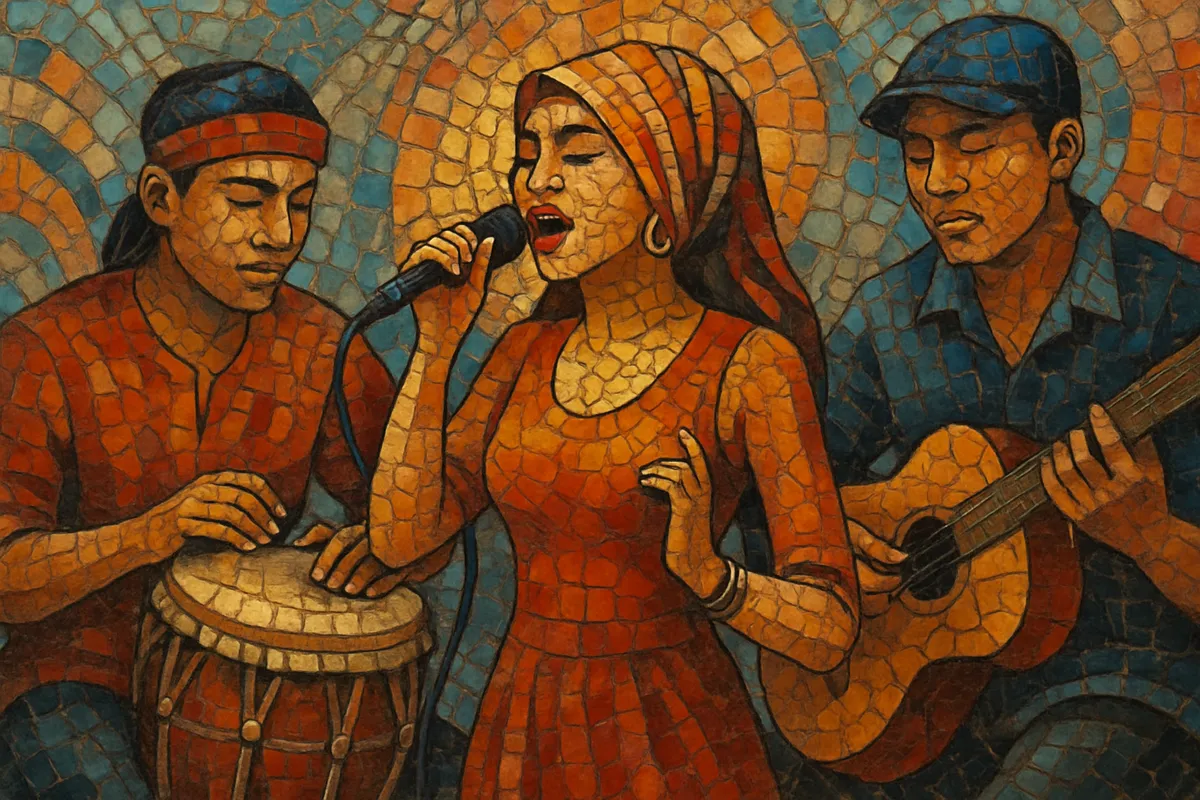Dangdut is a popular Indonesian dance music that blends Malay orkes Melayu roots with Indian film-music melodicism, Arabic ornamentation, and Western pop/rock arrangement.
Its onomatopoeic name comes from the low “dang” and high “dut” strokes of the hand drum pattern, evoking tabla/dholak- or kendang-like timbres. Typical ensembles combine traditional instruments (kendang, suling/flute) with electric guitars, keyboards, bass, and modern drum kits.
Vocals are melismatic and expressive, often featuring call-and-response with the audience, and lyrics span romance, everyday life, moral reflection, and social commentary. On stage, dangdut is festive and participatory, with signature dance moves (goyang) and a strong emphasis on groove.
Dangdut coalesced in urban Indonesia as orkes Melayu bands absorbed the melodic runs and percussion feel of Indian film music, alongside Arabic ornamentation and Western pop/rock backline. By the early 1970s, Rhoma Irama and his Soneta Group codified the style’s sound, stagecraft, and ethos, bringing incisive social themes and Islamic moral reflections into mainstream dance music.
The 1980s saw dangdut become a dominant national pop form. Stars such as Elvy Sukaesih, Mansyur S., A. Rafiq, Muchsin Alatas, Camelia Malik, and Meggy Z popularized a polished, radio-ready sound while keeping the genre’s hallmark drum groove and vocal melisma. Large-scale concerts and televised performances cemented dangdut’s mass appeal.
From the 1990s, regional variants flourished. East Java fostered the faster, more syncopated dangdut koplo, driven by intricate kendang patterns and crowd-interactive performance. In the early 2000s, performers like Inul Daratista drew national debate with dynamic goyang moves, highlighting the genre’s ongoing negotiation of morality, modernity, and entertainment.
Television talent programs and digital platforms propelled a new wave of pop-dangdut and koplo-influenced stars, including Via Vallen and Nella Kharisma. Producers increasingly blended EDM textures, autotune, and slick pop hooks with classic drum patterns. Today, dangdut remains a living, adaptive popular music, equally at home in village festivities, urban clubs, and viral short-form videos.


